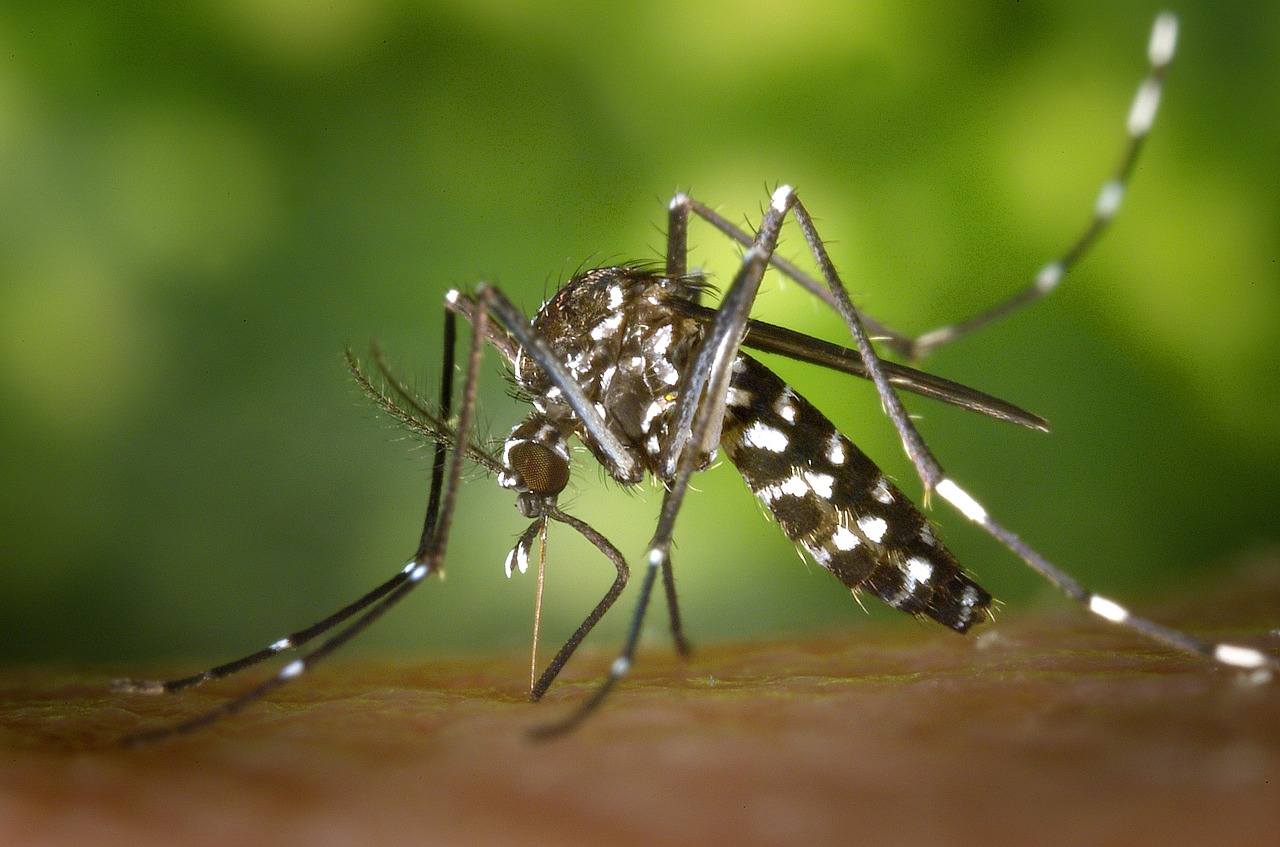Courtesy of Yale Climate Connections
Written by: Kristen Pope
Think of the world’s deadliest animal, and what comes foremost to mind? (For purposes of discussion and fear of losing readers, let’s exclude humans.)
Saltwater crocodiles get a lot of votes, and deservedly. So too do black mamba snakes – slithering at speeds of up to 12.5 miles per hour, but perhaps not so well-known to many. Pufferfish and golden poison dart frogs also garner their share of votes.
But closer to home (at least for most of us), it’s actually mosquitoes that earn the “We’re No. 1” ranking. Adding to the fear factor, mosquitoes also find alluring our human body temperatures and the carbon dioxide we exhale.
The World Health Organization reports more than 700,000 people around the world die from vector-borne diseases each year, and 438,000 global malaria deaths in 2015 alone. It’s for sure that not all mosquitoes carry the makings of Chikungunya, West Nile virus, Zika virus, and yellow fever that contribute to that yearly bounty, and some diseases are carried by vectors other than mosquitoes.
But while not every mosquito carries disease, some do, and that has scientists concerned that climate change may boost the number of mosquito-borne illnesses worldwide. Their concern only increases given that the buzzing bloodsuckers live on most of the Earth’s large landmasses other than, you guessed it, Antarctica and Iceland.
Researchers from the University of Bath, University of York, and China Agricultural University recently published a study in Communications Biology explaining how climate change could bring mosquito-borne diseases to areas where these diseases had previously been eradicated and also to entirely new areas.
The scientists modeled mosquito speciation rates over the past 195 million years and found a strong correlation between the rate of speciation and levels of atmospheric CO2 and temperature, with faster rates of mosquito evolution when temperatures were higher, and more CO2 was present.
What does this mean? “The evolution of mosquitoes certainly would raise the possibility of many bad things, such as triggering the return of some regional-eradicated diseases,” says Chufei Tang, PhD candidate at China Agricultural University, and one of the co-authors of the study. “A faster evolution of mosquitoes would definitely mean challenges to human beings.”
Tang notes the problems linked to mosquitoes and climate change aren’t limited to speciation – density is also a huge concern. “If the warming and the high atmospheric CO2 keeps going on, there would be more species, so the population would be more diversified,” Tang says. “There would be also more places with longer time that mosquitoes could breed. Thus the mosquitoes would have population growth, bringing higher density.”
Factors that could increase rates of mosquito speciation, including CO2 levels and temperature, may also affect other species – including the animals female mosquitoes feed upon for their blood meals. These species – and their interactions with mosquitoes – could evolve in unknown ways. “Our finding that mammal speciation is linked to mosquito speciation is unsurprising given that mammals are a predominant source of food for many species of mosquitoes,” according to the authors of the Communications Biology study.
As mosquitoes evolve, no one knows precisely what may happen, but experts like Tang are concerned. “We know that by the greenhouse trend, there would be more species and their group size would be growing,” Tang says. “This would bring higher possibility of transmitting diseases. The possibility might not be very high, but there might be new species transmitting diseases that the previous mosquitoes could not spread, so new disease would be epidemic. There might be new species people couldn’t control in a short time [that are] transmitting diseases, so some eradicated diseases come back. There would be more burden on the public health system whether the diseases could be easily cured or not.”
Dengue fever – ‘climate-sensitive’
While some researchers are examining mosquito speciation and evolution on a wide scale, others hone-in on a single deadly mosquito-borne disease: dengue. More than 40 percent of the global population live in areas where they could become infected with dengue, and the World Health Organization estimates 50-100 million people contract the virus each year, with 20,000 people dying of it. Dengue is considered a “climate-sensitive” disease since rates of the virus are linked to mosquito density, which is affected by temperature and precipitation.
Nils Stenseth, professor of ecology and evolution at the University of Oslo, and a number of researchers from other institutions, published their findings on dengue outbreaks in PNAS in February. Their goal: see if they could use climate data to predict outbreaks in a region of southern China. This area recently had suffered from “unprecedentedly severe dengue outbreaks,” the researchers wrote, adding that China’s Guangdong Province had 45,230 cases of the disease in 2014 alone.
In many parts of the world, old city centers where people live are located near ponds, parks, and other areas that mosquitoes find much to their liking. Stenseth says proximity between human habitation and mosquito habitat is particularly concerning given that warm, wet conditions lead people to leave their windows open, providing more opportunities for bites … and infections.
The team examined a decade’s worth of data, looking at mosquito abundance, temperature, and precipitation. They noted mosquito incubation is related to temperature, and found more mosquitoes between July and October, with a peak in August, though those peaks clearly vary by specific location. They reported a one-month lag between weather conditions and the abundance of adult mosquitoes. Using data from 2005 to 2014 to train their models, the researchers were able to accurately predict 2015 mosquito population figures. They concluded climate was the key factor driving the numbers.
However, Stenseth also pointed out that a number of other factors, such as El Niño and human movements, could affect the number and severity of dengue outbreaks. Another factor to consider is that not everyone who becomes infected with dengue shows symptoms, and many people are unaware they have contracted the disease. The PNASpaper noted, “The human risk is also likely underestimated, because asymptomatic infections are not included in our analysis.”
It may be tempting to leap to wide-ranging conclusions based on this study, Stenseth said, but he cautions people to avoid extrapolating the findings to other regions and diseases because a variety of other factors may also contribute to infection rates. “We should be very careful about taking a model that is fitted to data in one particular place and generalize that to be applicable all over,” Stenseth says, adding that the approach itself is applicable more broadly. He says he plans to continue researching how climate change affects mosquitoes and other vector-borne diseases.







